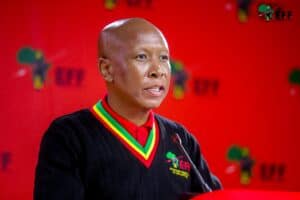The president's State of the Nation Address (Sona) tomorrow night comes at a difficult time for both the country and the president, and it is time for him to step up, or risk losing all credibility.

Cyril Ramaphosa’s State of the Nation Address (Sona) for 2020 comes at a difficult time for the beleaguered president. His leadership is being tested on all fronts, with crisis after crisis at the state-owned enterprises and pressure from his opponents within the governing party.
The euphoria of his victory at the ANC’s Nasrec conference in late 2017 and his replacement of Jacob Zuma as president a few months later are now over. Nothing short of tangible action is expected from him, to grow the stagnant economy and address the rising unemployment and crime levels.
The crises besetting state-owned enterprises and collapsed service delivery at municipal level gave Ramaphosa a black eye because expectations were higher following the “nine wasted years” of Zuma rule.
Not just his political opponents but some ordinary people doubted the president could save the situation. However, he remained optimistic that his efforts to attract foreign direct investments would help turn things around.
He pinned his hopes on pledges made by foreign investors at the last two investment conferences and during his trips overseas. He was also getting good feedback from his investment envoys.
But with nothing to show, save the pledges, he needed to act, and act fast. His party opponents had sharpened weapons and more ammunition before the ANC general council – for allegedly failing to implement resolutions from Nasrec.
In November and December last year, six months after receiving an electoral mandate from voters at the May poll, data from the South African Citizens Survey indicated that 28% of South Africans believed the country was heading in the right direction.
This was a 10% drop from the data collated in May-June, when 38% of South Africans felt positive about the direction in which the country was heading.
This was the first indication that all was not well, as voters felt betrayed by government.
Looking at the impact of Sona 2020, Citizen Surveys said, in spite of Ramaphosa’s efforts to attract international investment to help grow the economy and create jobs, South Africa’s economy remained stagnant.
It also highlighted the worsening unemployment and crime, as well as growing poverty.
The on-going Eskom load shedding crisis was not assisting economic growth.
Citizen Surveys strategic research director Reza Omar said: “For most South Africans, the biggest question to be answered in the 2020 Sona is: where to from here?”
According to Omar, during November and December last year, South Africans were asked who was to blame for the Eskom crisis. Interestingly, some 31% said that Eskom’s leadership did not do their jobs properly, followed by the municipalities that didn’t pay Eskom on time (24%).
“Government, state capture, the ANC and ex-president Zuma were also blamed for the crisis,” Omar said.
This was in contrast to the April 2019 survey when a minority blamed Ramaphosa. By the end of 2019, South Africans did not appear to blame the president for the Eskom crisis.
With at least 41 municipalities under administration – that’s a whopping 20% of the councils in the country – Ramaphosa had his hands full.
In all the municipalities, including those that were still running, infrastructure had collapsed.
Refuse removal had stopped in the smaller municipalities, such as Sol Plaatje municipality in Kimberley. Residents had been complaining about dirty streets and the environment at Galeshewe, where the council said it had no trucks to do the job.
Residents in various rural municipalities in the Free State had endured raw sewage running in the streets for many years, while Qwaqwa had no water for more than a decade.
In the Free State’s Mangaung metro, which is under administration due to maladministration and corruption, service delivery had come to a standstill.
Around the supposedly affluent Johannesburg, drainage systems were blocked and flooded roads last weekend swept some people away.
In previously clean cities, like East London and King William’s Town, raw sewage leaked on to the streets due to decayed apartheid-era infrastructure.
The Amahlathi municipality in Stutterheim, also in the Eastern Cape, completely collapse and was being run by an administrator, while 15 municipalities in North West were also under administration.
Although service delivery protests were common under Zuma, it seemed the situation had worsened under Ramaphosa. He inherited most of it, but the situation escalated during his reign.
– [email protected]
For more news your way, download The Citizen’s app for iOS and Android.






